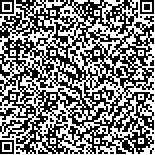下载中心
优秀审稿专家
优秀论文
相关链接
摘要

从珠江三角洲区域总体出发,探讨大范围城镇建筑覆盖变化的遥感监测方法。分析了城镇建筑覆盖变化专题信息提取方法概况,比较了最大似然法、上下文分类法、人工神经网络三种分类方法的优缺点。借助GIS技术的术持,在计算机自动分类的基础上利用专家知识改进了分类结果。根据遥感监测结果,对1988—1998年间珠江三角洲城镇建筑覆盖变化特征进行了分析。
From the regionality viewpoint,this paper discussed the methods of built-up landcover change monitoring by remote sensing in large-scale regions. The methods of extracting built-up land-cover change information were generally discussed. The benefits and accuracy of 3 classification methods of MLC,frequency-based contextual classification with gray-level vector reduction, and ANN were compared in the test classification. The tests proved that the highest accuracy of classification method was the ANN,the kappa index was 0.6625. However,it need a long time to train the neural net,and the classification results didn't have a significant improve than the other two methods. Frequency-based contextual classification considered the neighborhood pixels information,but the classification result depended on the window size greatly,it's not easy to select a good window size for every kinds of land-cover. According to the test results,we selected the MLC to classify the TM imageries of the Pearl River Delta. With the expert knowledge,the computer classification results were improved based on GIS. The final results showed that the built-up land-cover of urban area changed greatly during 1988-1998 The buili-up land-cover area was only 556.08 km 2 in 1988,and increased to 1497.61 km 2 in 1998. Both core-oriented development and road-oriented development of the built-up land-cover were significant in the Pearl River Delta. During the study period,66.87% of the new built-up land-cover was in the 1 kilo-meter buffer of the main roads. But the general spatial structure kept relatively stable,83.46% of the built-up land-cover in 1988 was in the inner ring,and it was 84.18% in 1998. Finally,the results show that the built-up land-cover change destroyed the high quality soils greatly.

